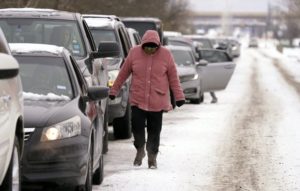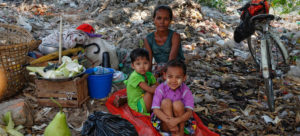Many adults who live in communities that have experienced mass violence have symptoms of posttraumatic stress disorder (PTSD) years after the event, according to a study in JAMA Network Open. The study found that approximately 1 in 4 individuals met criteria for past-year PTSD and roughly 1 in 10 for current PTSD.
Angela D. Moreland, Ph.D., of the Medical University of South Carolina, and colleagues analyzed data from a 2020 survey of 5,991 adults who lived in six communities that had experienced mass violence between 2015 and 2019: Dayton, Ohio; El Paso, Texas; Parkland, Florida; Pittsburgh, Pennsylvania; San Bernadino, California; and Virginia Beach, Virginia. All six events were mass shootings.
The survey asked participants about whether they were exposed to mass violence directly or were close to someone in the community who was. Participants also answered questions on their exposure to potentially traumatic events prior to the mass violence, how much social support they received in the past six months, and questions that measured their symptoms of PTSD within the past year and the past month.
Roughly 21% reported that either they or a close friend and/or family member were onsite during the mass violence incident. Overall, roughly 24% met presumptive DSM-5 diagnostic criteria for past-year PTSD and roughly 9% met the criteria for current PTSD.
The researchers found that participants who reported direct or close exposure to a mass violence event 66% and 82% greater odds of meeting criteria for past or current PTSD, respectively, compared with those not exposed. Greater odds of having either current or past-year PTSD also occurred in women, participants who had a history of potentially traumatic events (particularly physical or sexual assault), and participants with low social support.
“Overall, our findings suggest that future response and recovery initiatives should assess for sociodemographic characteristics, history of [potentially traumatic events], and access to social support to allocate resources to those individuals most at risk for experiencing PTSD in communities affected by [mass violence incidents],” the researchers wrote.
The researchers added that the six communities studied were heterogenous with respect to ethnicity, income, time since the mass violence incident, and degree of exposure. “Future research should consider the impact community-level differences, such as racial injustice and history of community violence, may have on rates of PTSD,” they wrote.
For related information, see the Psychiatric News article “Gazing Into the Shattered Mirror: Gun Violence in America.”
(Image: Getty Images/iStock/USA-TARO)
Source: https://alert.psychnews.org/2024/07/ptsd-symptoms-linger-years-after-mass.html




